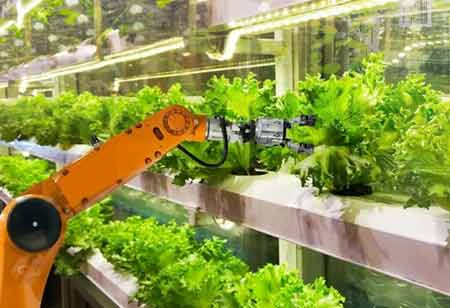Thank you for Subscribing to Agri Business Review Weekly Brief
Why is Vertical Farming Unfavorable?
With an expected 9.7 billion people on the planet by 2050, food security will become a severe issue for several countries.

By
Agri Business Review | Thursday, April 28, 2022
Stay ahead of the industry with exclusive feature stories on the top companies, expert insights and the latest news delivered straight to your inbox. Subscribe today.
Many vertical farms fall into the trap of attempting to grow food for the market while also productizing and marketing the technology they use to cultivate their food.
FREMONT CA: With an expected 9.7 billion people on the planet by 2050, food security will become a severe issue for several countries. Vertical farming is frequently cited as a solution to our food scarcity problems because of the numerous benefits detailed in this article. While vertical farming is gaining popularity, there are a few caution flags. It has high initial costs, consumes a lot of energy, and necessitates highly skilled personnel.
This article discusses some of the difficulties of vertical farming and offers alternative remedies.
Exorbitant beginning costs: Vertical farming is a costly enterprise, as each step of the process, from facility selection to crop selection, needs significant financial investment. Land costs alone significantly increase the initial upfront expenditures, as urban land is typically rather expensive. On the other hand, numerous vertical farms have been able to reduce facility costs by repurposing existing structures such as shipping containers, derelict factories, and abandoned office buildings. Alternatively, vertical farms could be constructed on inhospitable ground unsuitable for conventional cultivation.
Equipment expenditures place an additional strain on the budgets of many vertical farming enterprises. Most vertical farms require high-priced equipment like climate controls, shelving units, LED lighting, water lines, and computers. Nonetheless, as indoor agriculture gets more popular and the number of vertical farms increases, the cost of indoor agriculture equipment is likely to fall considerably.
Energy: Vertical farming is unquestionably an energy-intensive enterprise, but it becomes exponentially more when farms rely entirely on artificial lighting systems. Energy consumption accounts for around 40 percent to 50 percent of overall production expenses, while lighting costs alone might account for 25 percent to 30 percent of operational costs.
Labor: Labor is typically the biggest operational expense for all indoor farming enterprises, with a small hydroponic farm spending 57 percent on labor. Vertical farming is also projected to see significant cost savings as technology improves and efficiency increases.
Other: The operating costs of most vertical farms are highly dependent on the farming method used, as each has unique requirements. Vertical farming techniques such as geoponics, hydroponics, and aeroponics are currently the most extensively employed. For instance, geoponic systems are less expensive in terms of maintenance, labor, and technical costs, whereas hydroponic and aeroponic methods require highly skilled employees to operate appropriately. Apart from this, the expenses of seeds, nutrients, and growing mediums also contribute to the final operational costs of these systems.
Extremely high energy demand
Natural light is replaced by artificial illumination provided by LED (Light Emitting Diode) lighting systems in vertical farming. The lights can be on for up to 20 hours every day, depending on the needs of the plant variety. The most crucial component of a vertical farm is the lighting, which consumes a significant amount of electricity. Vertical farming can significantly lower its carbon impact by gradually transitioning to renewable energy sources such as wind and solar. Numerous vertical farms are fast phasing out conventional energy sources in favor of renewables, with some currently totally powered by renewables. As renewable energy grows more common in many nations, it will become more accessible than ever to transition to it. Additionally, technological advancements in LED and HVAC systems will result in lower equipment and manufacturing costs and reduced energy use.





